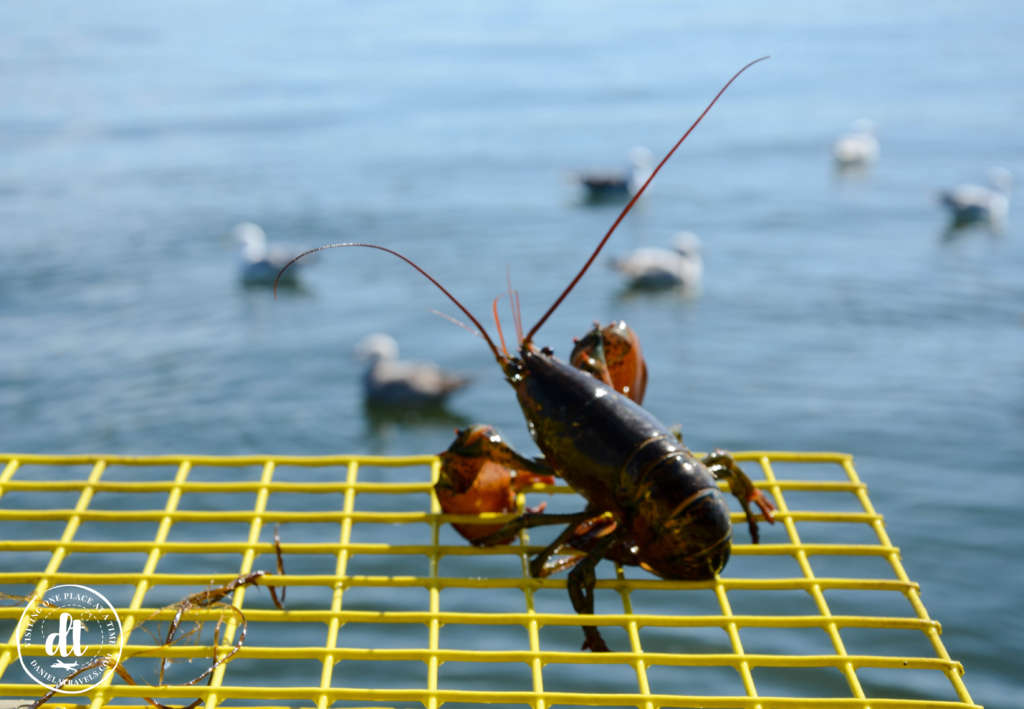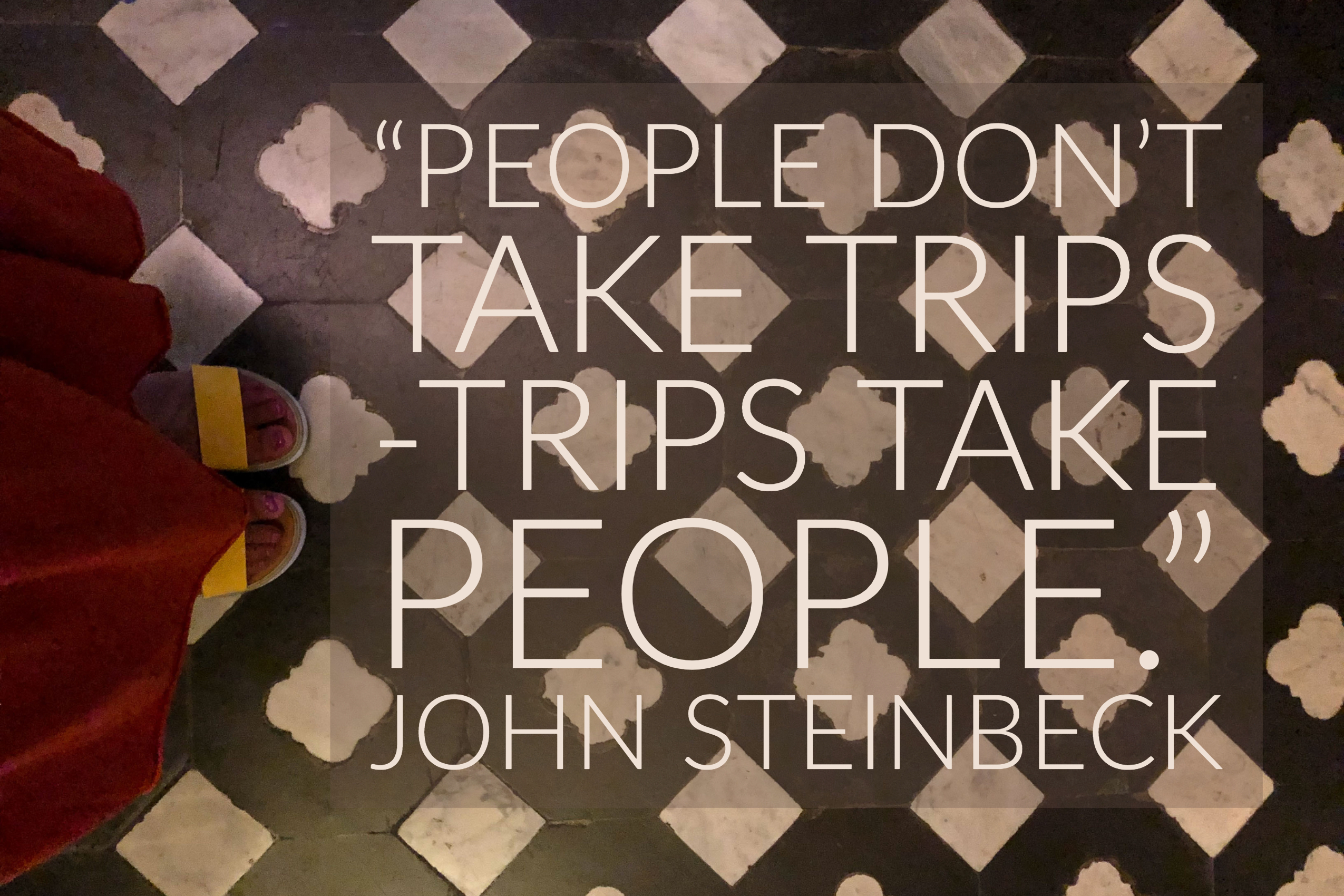When I heard that it was possible to do a tour to catch lobsters in Portland, Maine, the idea fascinated me, so right away I signed up for a tour. Lucky Catch was our tour company. They described the experience as an “unforgettable one.” At first, I thought that maybe their description was a little bit exaggerated, so I decided to try it for myself and truly discover what was involved in catching a lobster.
Meet the Experts
Once we were ready for the adventure, we met our lobsterman, captain Dave, as well as Sheila who explained to us the routines to follow to catch a lobster.

Once in the boat, we were asked to put on an orange vinyl apron to make sure we did not get too dirty on this journey. At this point, I was all in! This was an authentic experience and I was being a real “lobster lady” for a couple of minutes.
Casco Bay
As we navigated further from land, we were able to see birds, ducks, and seals in the water. This beautiful area started showing us its richness of fauna and colorful blue waters. Our view was enlightened by picturesque lighthouses and the historic Civil War fort. Sheila was kind enough to tell us the details about the lighthouse and fort.

How is a lobster caught?
Lobsters are caught in traps; every lobsterman has his own colorful buoys that signal where the traps are. Lobstermen are very conscious about this rule and do not check traps that do not have their marks. In Maine, a lobsterman can put out a maximum of 800 traps.

As we continued navigating, our lobsterman showed his colorful buoy in the water telling us that it was time to pull the trap. He pulled the trap, with the help of a pulley, up to the boat. Curiosity got the best of us as we gathered close to the trap. To our surprise, a crab got into the trap but no sign of lobster. We were able to hold the crab before it was sent back to the ocean.

What is in the trap?
Sheila guided us in setting the trap so it would catch some lobsters in the future. We took a small net and, with the help of everyone in the group, we picked five small fishes from a bucket that were previously fished to put inside the net. The net was then closed and tied to the center of the trap. The trap was closed and two people had the fun opportunity to throw the trap back to the ocean. The colorful buoy marked the spot for the lobsterman’s future return.

The journey continued exactly the same with the opportunity for everyone to participate in getting the trap, setting the trap and throwing the trap. Some traps had crabs, small fishes, dirt, sea plants, but no lobster.

One thing I learned through this process was the perseverance of a lobsterman. This kind of job can be discouraging if you don’t have a good attitude.

Finally, there was a lobster in one of the traps. The little guy was measured, making sure all the guidelines for lobster were followed. We were glad to see that he was a keeper.
Why is lobster so expensive?
To catch a lobster is a lot of work that most of the time is done in hard weather conditions, as well as being a slow process. Lobsters do not grow very quickly, it takes five to seven years for a lobster to reach the legal catch size of one pound.

Great Adventure
Our tour lasted 90 minutes. It was a great time enjoying nature and learning where our food comes from. This was a terrific experience that I would recommend to anybody visiting Portland. It was a lot of fun and helped me understand and appreciate the lobsterman profession. Now, every time that I eat lobster I will think of all the hard work that happened behind the scenes in order for me to enjoy this meal.

In case you are still wondering, the answer is “Yes!” This experience is absolutely “unforgettable,” just like Lucky Catch describes it on its website.



